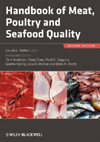Independent Thoughts
Aquaculture Stewardship Council aims to transform seafood farming globally
ASC shares insights on best practices.

Photo credit: Aquaculture Stewardship Council
The Aquaculture Stewardship Council works with partners to transform seafood farming globally and promote the best environmental and social aquaculture performance toward environmental sustainability and social responsibility. ASC’s Erica Tardiff, U.S. market development manager, and Athena Davis, marketing manager for Aquaculture Stewardship Council North America, share some insights ASC and the productions practices it seeks to support.
What operational efficiencies does aquaculture offer for finfish production vs. wild caught fish?
Aquaculture offers numerous efficiency benefits in the responsible production of fin fish. Immediate examples include:
- Aquaculture provides better monitoring of nutritional efficiencies of diet and ability to monitor water quality throughout a fish’s life cycle with effectiveness increasing even further in closed systems.
- Full control of life cycle i.e., water temp, pH, feeding amounts, etc.
- Aquaculture can create ideal conditions so that products are available all year round without reliance on seasonality, creating financial stability for producers and consistency for retailers and consumers.
- Consistent fin fish farming can offer stable work for employees, avoiding the risk of fishing seasons being impacted by environmental legislation, cancellation of fishing seasons for at-risk species and environmental disasters.
- Easier harvest efforts that include a reduction of fossil fuel use.
- Aquaculture can bring an economic boost to costal and rural production areas.
- Erica Tardiff
What aquaculture products are best suited for production for small to mid-size operations?
Mollusks (clams, mussels, oysters), tilapia and seaweed are suitable for small production sites as they grow well in compact vertical spaces and aquaponics systems. Many other species could feasibly be farmed in small to mid-size sites, but market value per pound plays into this decision. For example, a small shrimp farm (low value) probably wouldn’t be financially sustainable compared to a high-value species like salmon, which could be profitable even at a small scale.
-- Erica Tardiff
What are Aquaculture Stewardship Council‘s sustainability goals?
The Aquaculture Stewardship Council is a global, nonprofit impact organization with a mission to transform aquaculture toward environmental sustainability and social responsibility. We do this by using efficient market mechanisms that create value across the chain. Ultimately, our vision is a world where aquaculture plays a major role in supplying food and social benefits for humanity while minimizing negative impacts on the environment.
Globally, ASC addresses targets within all 17 of the United Nation’s Sustainable Development Goals (SDGs) with more than 80% of these considered to be well or very well addressed [See: ASC’s first SDG Report here]
From a market perspective, we strive to create an environmentally responsible farmed seafood option for consumers. Our certification includes hundreds of environmental and social requirements for certified bodies to comply with starting right at the farm. Through chain of custody certification, each entity in the supply chain must then be audited to become certified. This means that when shoppers see ASC’s sea green label on seafood products, they can be assured that every step in the journey has complied with rigorous requirements designed to help achieve our broader sustainability mission.
-- Erica Tardiff
How do costs for aquaculture-produced seafood compare with wild caught, etc.?
Generally speaking, farm-raised fish cost less than wild-caught seafood. Although, this can vary based on species and depending on market demand, there is overall a lesser cost associated with harvesting in aquaculture and this translates to pricing and affordability at the consumer level.
-- Erica Tardiff
What new product development and/or marketing opportunities does sustainable aquaculture present?
Sustainable aquaculture presents broad and exciting opportunities at virtually all levels, from new products to education that can positively impact purchasing decisions.
On the product side, we’re seeing a culmination of factors like affordability, consistency and product quality come together with responsible sourcing in farmed seafood products that are quick and easy, yet trendy enough to turn heads. This includes shelf stable, ready-to-eat seafood meals in unusual flavors, a resurgence of smoked fish tins, seaweed snacks and hot sauces, and a variety of value-added seafood products – from fresh to frozen – given a modern twist. Here are a few examples:
- Freshé’s Moroccan tagine gourmet meal with smoked salmon
- Fishwife’s smoked rainbow trout tins
- Cole’s Patagonian smoked salmon fillet in EVOO
- MOWI mojito lime flavored cold smoked salmon
- Sea Tales flame roasted smoked salmon
When it comes to marketing opportunities, the world is our oyster in terms of educating consumers about aquaculture, especially in North America. Farmed seafood has had a bad rap, but it’s also a widely unknown industry. We are inspired to share the story of its successful trajectory and multitude of benefits, including how responsible seafood farming can actually help preserve wild fish populations and protect our oceans. Today’s shoppers are keen to learn more about the food they are consuming, where it was sourced, how it was raised and whether they can feel confident serving it to their families.
There is an untold aquaculture story that taps into these values. ASC has been fueling this conversation through our nationwide “Sea Green. Be Green.” marketing campaign that encompasses tastings and sampling events, chef collaborations, social-digital applications and media outreach. Our goal is to make seafood more approachable in general, while bringing particular attention to the positive impacts that shopping and eating certified, responsibly raised seafood can offer.
-- Athena Davis
Looking for a reprint of this article?
From high-res PDFs to custom plaques, order your copy today!
.png?height=96&t=1647275041&width=96)








